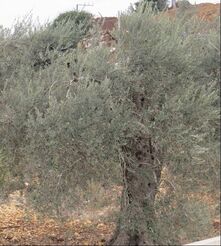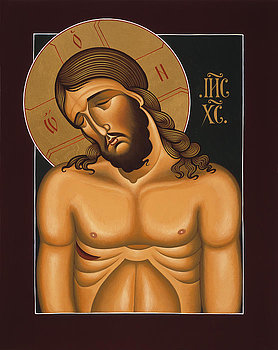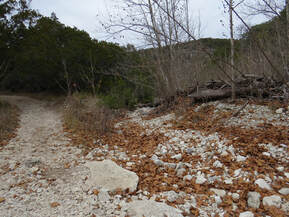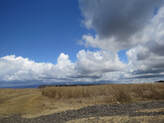 watching and participating in the events watching and participating in the events As Holy Week begins our focus should move away from our own efforts in sacrificing to those of Jesus. The first three days of the week after Passion Sunday are actually the last three days of Lent, followed by the three days of the Easter Triduum: Holy Thursday, Good Friday, and Holy Saturday. The Triduum ends with the Easter Vigil, and therefore it is important to remember that we are at the tomb of Jesus until sundown; our prayer and sacrifice chosen for the season of Lent does not end until that point. Entering fully into those days is as important as what led up to them since they invite even greater immersion into the suffering and death of Jesus, freely chosen in order to complete the work of atoning for sin and bringing about salvation. In short, we turn our attention away from what we were doing throughout Lent, even though we were doing it for Him, and shift to watching and participating in the events that Jesus suffered during those days we call the Triduum. Our participation comes in the form of our private prayer and in reflecting upon the liturgies that are part of the Triduum, regardless if we are present in church or not. Every moment of those three days is about Jesus and what He suffered to enable what follows on Easter Sunday.  "I AM." "I AM." Recently I read an excellent reflection by Heather King. In it, she referred to Msgr. Lorenzo Albacete, a Puerto Rican priest and theologian.* She quoted one of his books in which he used the term co-suffering in reference to sharing in the suffering of another. Msgr. Albacete said that it is not appropriate to be like the friends of Job who tried to explain suffering away, and that in fact, attempts at minimizing the suffering of another are harmful. Rather, he suggested, we should risk putting our own faith on the line by entering into the suffering of the one who does not have faith or who questions faith. This moved me to reflect upon what Jesus risked from the very first breath He took as an infant, becoming fully human while remaining fully God. How difficult it must have been when He came into conscious understanding of who He was and what He was to do, remaining in awareness of His full divinity while also living as fully human! How difficult it must have been when He was tempted in the desert as He fasted and prayed, knowing what was to follow in a few short years! How difficult it must have been to know that the people He chose as His closest friends would betray Him! How difficult it must have been with every healing and teaching to know that He would be rejected by His people! How difficult it must have been when He gave His Body and Blood as an everlasting gift at the Last Supper, knowing that some would not recognize His presence! How difficult it must have been to stand in the Garden of Gethsemane and say, “I AM,” and then choose suffering when the soldiers and Jewish officials came for Him!** Therefore, it is important for us to realize that Jesus’ sufferings did not begin at the agony in the Garden, but well before: the suffering of Jesus began with everything He did throughout His ministry. That isn’t to say that He did not have the joy that accompanied His good works and the love of His Holy parents and friends. But ultimately, Jesus knew that all He did would accompany Him to the Cross so that He could accomplish that for which He had come.  suffering takes on value suffering takes on value A final thought on suffering: just as we would never dream of saying to Jesus (during His Passion), “There, there, you’ll be okay,” or “I understand what you are going through,” we should not say those things to those who suffer. Co-suffering means (to me) that we stand with the other, but we do not minimize or attempt to explain it away. Their suffering just is, and it is their road to holiness as much as it was Jesus’ road to our salvation. If there is anything at all we learn about suffering from Jesus, it is that suffering is a mystery, it’s causes, it content, the ‘why’ of it are not where we are invited; it is not about understanding, but rather about the experience itself and accompanying the one who suffers. Jesus suffered for us, and therefore suffering takes on value; if not, God would have chosen another way. What Jesus asks is that we accept what His cross won, and accept that no matter what happens in our life, no matter how little sense it seems to make, no matter how much our feelings seem to tell us that somehow God got it wrong, or at worst, that ‘there is no God because I am suffering,’ Jesus really is there with us. The suffering of Jesus teaches that He chose to go through worse things than we could ever imagine, not because He somehow deserved to take on the sin of humanity, or even that we deserved salvation, (because we certainly didn’t), but because His love for us is that great. We can pray and meditate upon this during our walk to the foot of the cross with Jesus this Holy Week. If we seek it, Jesus will help us more clearly grasp with our hearts rather than with our minds, what it means to be fully human through our suffering and fully loved through His.  may we... find grace in Jesus may we... find grace in Jesus May we who struggle with our faith during times of personal suffering find grace in Jesus! May we who struggle with being present to our loved ones who are suffering find Love in the wounded heart of Jesus! And may we, at the end of our Lenten journey, find joy in the knowledge that we are never alone! Let us meet on the road and at the cross! Triduum peace! ©Michele L. Catanese * The article from Heather King was found in Angelus news on March 10, 2023. It is called Finding Freedom in Suffering. I highly recommend reading it. Toward the beginning of the article she wrote about Msgr. Lorenzo Albacete. The inspiration for my reflection here and the quote from Msgr. Albacete comes from his book, Cry of the Heart, as quoted by Heather. You can find all of this in her article at https://angelusnews.com/voices/finding-freedom-in-suffering/ ** John 18:1-8 Images: 1. My photo; olive tree in an ancient olive grove in Israel. 2. Painting, The Guards Falling Backwards (Les gards tombant à la renverse), by James Tissot, 1886-94. 3. Icon, Jesus Christ Extreme Humility, by Fr. William Hart McNichols. You can find this icon at fineartamerica.com/featured/jesus-christ-extreme-humility-036-william-hart-mcnichols.html 4. My photo, dry stream bed; Lost Maples State Natural Area, Vanderpool, Texas. Note: In compliance with GDPR rules, I wish to make it clear that I do not gather any information on any of my readers at any time. Comments are closed.
|
Heart Speaks to Heart
|

 RSS Feed
RSS Feed

